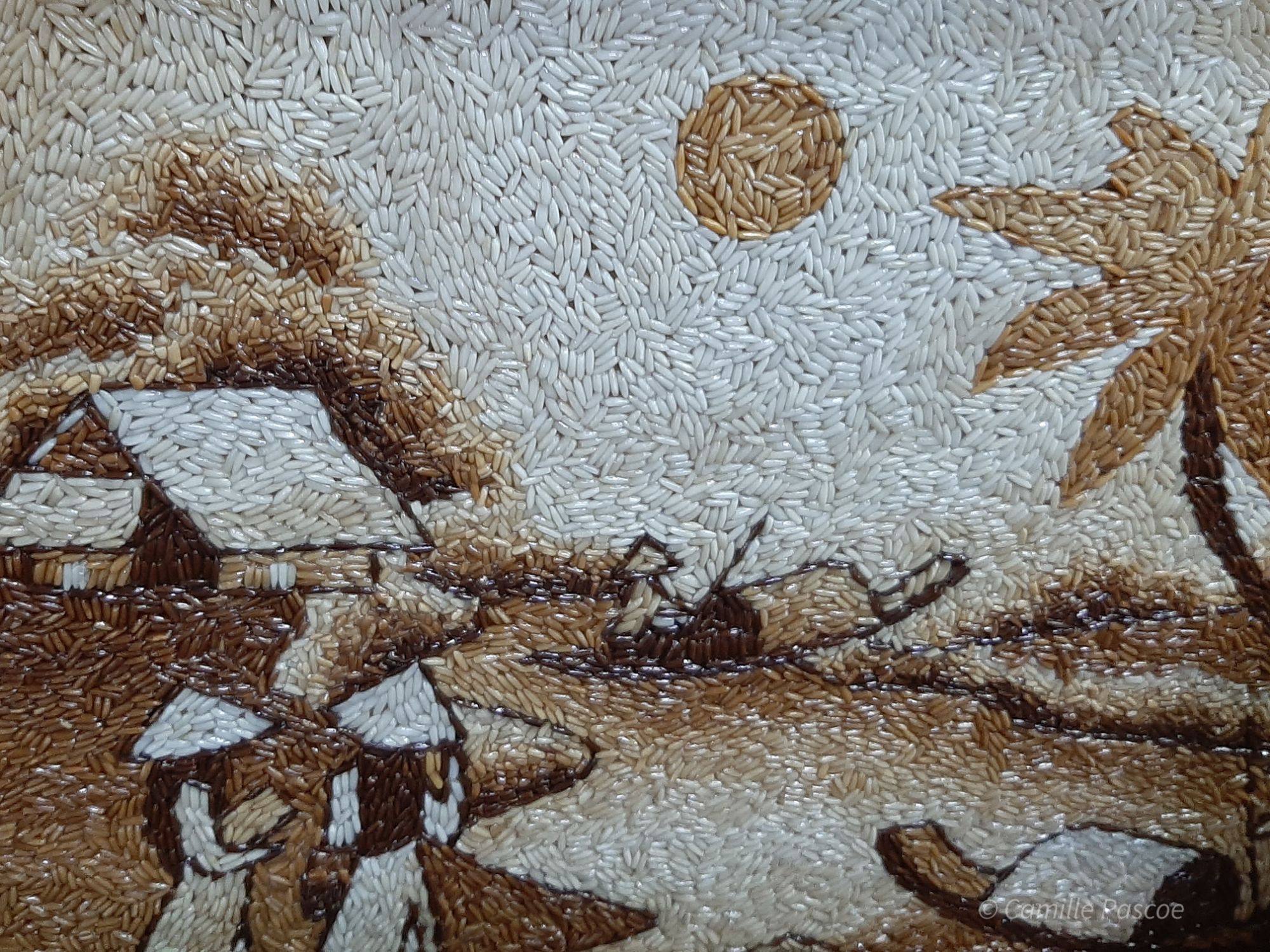In the realm of Vietnamese art, there exists a unique craft known as rice grain painting. I first encountered this mesmerizing artform while visiting HoiAn. As I Gazed on the artwork I couldn’t help pondering on the time, patients and steady hands required for this artform.

Meticulous craftsmanship and the rich symbolism woven into every grain of rice
The majority of rice grain painting I’ve seen so far seems to showcase the cultural significance of rice in Vietnamese society, with each grain carefully placed to depict scenes of rural life, landscapes and historical events.
Origins Of Rice Grain Painting
It is said that the artform may have originated in India and there is also another account of its origins in the Red River Delta of Vietnam. The Red River Delta is associated with the wet rice cultivation and the Dong Son Culture. No matter where it originated, Vietnamese artisans have made rice grain painting a renowned work of art, with its meticulous details and cultural symbolism.
3 Countries known for their art forms using grains and seeds:
Similar art forms using grains like barley, wheat and seeds can be found in various cultures worldwide, each reflecting a deep connection to agriculture and nature.
In the Ukraine, there is a traditional form of art known as “Petrykivka painting,” which involves creating intricate and colorful floral designs using a special technique of painting with barley, wheat, and other natural materials. These designs are often found on various decorative items like plates, boxes and furniture.
In India, particularly in the state of Tamil Nadu, there is a traditional art form called “Kolam” or “Rangoli,” where intricate patterns and designs are created on the ground or floor using colored rice flour, grains, or seeds. These designs are often made during festivals, weddings and other special occasions as a way to welcome guests and bring good luck.
In Mexico, there is a long-standing tradition of creating intricate and colorful “Huichol art” by the Huichol people. This art form involves using tiny seeds, beads and grains like corn to create colourful and detailed designs on various objects such as gourds, masks and sculptures. The intricate beadwork and use of natural materials make Huichol art truly unique and culturally significant.
A salute to the artists worldwide who are preserving traditions and stories through their intricate creations. This transformation of humble grains and seeds into compelling works of art is another example of the creativity and resourcefulness of the artistic.
Discover more from Ports In Paradise
Subscribe to get the latest posts sent to your email.

